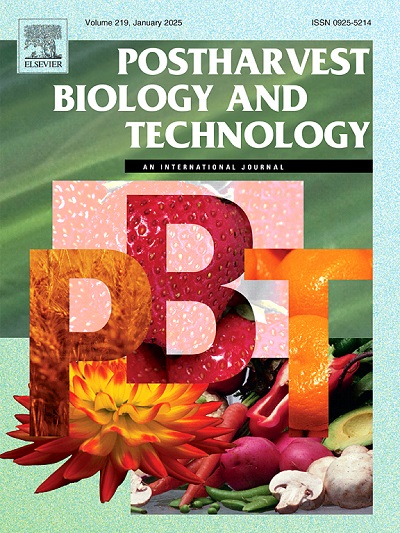Enhancing quality and shelf life of fresh-cut Paprika (Capsicum annuum L.) using insulated packaging with ice packs
IF 6.4
1区 农林科学
Q1 AGRONOMY
引用次数: 0
Abstract
Maintaining the quality of fresh-cut produce during transport is crucial in the rapidly expanding e-grocery market. The present study investigates how varying quantities of ice packs in delivery boxes affect the preservation of fresh-cut paprika (Capsicum annuum L.) under simulated high-temperature conditions. We monitored several key quality indicators—temperature profile, appearance, weight loss, color, firmness, microbial growth, antioxidant activity, and volatile metabolite profile—of fresh-cut paprika stored in expanded polystyrene (EPS) containers at 30 °C over 48 h. The results demonstrated that with no ice packs, internal temperatures rapidly reached the external temperature within 6 h, which rapidly degraded the quality. In contrast, using ice packs significantly decelerated temperature increases, with two ice packs exhibiting the least overall quality decline. These samples exhibited substantially lower weight loss (<10 %) than those devoid of ice packs (26.3 %), alongside better color and firmness retention, and microbial counts remaining below the safety threshold of 5 log CFU g−1 for up to 12 h. Additionally, ice packs delayed changes in volatile metabolite profile, thereby preserving desirable flavors. This study provides empirical evidence of the effectiveness of ice packs in ensuring the safety and quality of fresh-cut paprika during deliveries, contributing insights into effective distribution strategies for perishable products.
求助全文
约1分钟内获得全文
求助全文
来源期刊

Postharvest Biology and Technology
农林科学-农艺学
CiteScore
12.00
自引率
11.40%
发文量
309
审稿时长
38 days
期刊介绍:
The journal is devoted exclusively to the publication of original papers, review articles and frontiers articles on biological and technological postharvest research. This includes the areas of postharvest storage, treatments and underpinning mechanisms, quality evaluation, packaging, handling and distribution of fresh horticultural crops including fruit, vegetables, flowers and nuts, but excluding grains, seeds and forages.
Papers reporting novel insights from fundamental and interdisciplinary research will be particularly encouraged. These disciplines include systems biology, bioinformatics, entomology, plant physiology, plant pathology, (bio)chemistry, engineering, modelling, and technologies for nondestructive testing.
Manuscripts on fresh food crops that will be further processed after postharvest storage, or on food processes beyond refrigeration, packaging and minimal processing will not be considered.
 求助内容:
求助内容: 应助结果提醒方式:
应助结果提醒方式:


